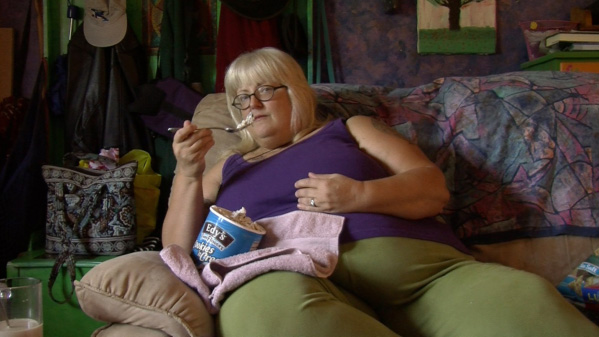
The American Society of Addiction Medicine (ASAM) defines addiction as “a primary, chronic disease of brain reward, motivation, memory and related circuitry”.
“There is no one who loves pain itself, who seeks after it and wants to have it, simply because it is pain…”
When we talk of addiction, we typically think of psychoactive substances. I would argue that we all have some behaviors we engage in that meet both the broad and more specific definitions listed above, yet have nothing to do with alcohol or drugs.
Some behaviors may be harmful by their nature while others are matters of moderation (or the lack thereof). Overeating, eating fatty or unhealthy foods, impulsive shopping, excessive gambling, harmful relationships, pornography, gossiping, laziness…the list goes on and on.
So why do we do that? Why do we continue to engage in behaviors that we know are harmful? Why isn’t knowledge and acceptance of the harm enough to change the behavior? With our highly developed brains, you’d think we’d be able to say, “this isn’t good for me, I’ll stop now”.
“Not all addictions are rooted in abuse or trauma, but I do believe they can all be traced to painful experience. A hurt is at the centre of all addictive behaviours. It is present in the gambler, the Internet addict, the compulsive shopper and the workaholic. The wound may not be as deep and the ache not as excruciating, and it may even be entirely hidden—but it’s there. As we’ll see, the effects of early stress or adverse experiences directly shape both the psychology and the neurobiology of addiction in the brain.” ― Gabor Maté, In the Realm of Hungry Ghosts: Close Encounters with Addiction
Looking at addiction through this lens, the focus shifts from the addictive behavior to the physical, emotional and spiritual condition of the person. Thinking of these behaviors as attempts at temporary relief from pain, the question then shifts from “why can’t I stop” to “why am I hurting”?
Education, behavior modification and relapse prevention are all proven and effective tools in battling addiction, but they don’t address the why. Recovery from addiction is as much about healing as it is about changing specific behaviors.
So how do we heal? The 12-steps of AA have helped many. Traditional religious experiences have benefited others. Yoga appears to be effective in some cases. Caring and supportive relationships seem to be required in nearly every case.
What do you think? Do you see a connection between pain and any behaviors you struggle with personally? Would it help to recognize the behavior for what it is? Would it help to ask “what is it that I REALLY need”?




3 thoughts on “Addictive Behavior: Why Do We Do That?”
The final questions are the start point of my counselling, the curious questions. People have the rationale for behaviour lost in their habitual responses as they travel through life’s journey running on automatic. This can be buried and hidden such that the person is unaware.
Understanding the behaviour in the context of the person’s life is a reasonable focus. While we try to understand this we may open up pain. This is not really helpful. If the person puts the painful card on the table then we know they are ready, we aren’t lifting the ‘scab’ off the painful wound.
I also look at all of our behaviours as serving a purpose. Glasser (1998) introduced the concept of Total Behaviour in his book Choice Theory. All behaviour has 4 components: emotions,the physiology – both of which we don’t have complete control, and thinking and actions – over which we have complete control.
I suggest that when we run on automatic it certainly feels that we aren’t in control of any of this. The angry person will accuse the trigger of ownership of the anger by saying things like “you make me angry” rather than saying “when you do, or say, that I feel angry.” It may be subtle. I look for such things embedded in what a person says and keep open to what is not said, the avoidances and the emotional shifts.
The basis of my counselling is very strongly Choice Theory with a healthy helping of the spirit of motivational interviewing and more recently adaptations from Acceptance and Commitment Therapy. I have been a Mental Health Nurse for about 30 years and am still learning as I go. I started out with the Medical model and Freudian psychoanalytical blend with a healthy influence of the challenging perspective of anti psychiatry. When I identify myself as a mental health nurse I mean that my focus is on health not illness. I work with awareness of both and try to take care with pathologising.
Thanks for the comments Paul…Reality Therapy was the first book I read about psychology and has formed the foundation of my approach. My biggest departure from Glasser is in my belief that what happened in the past is important and is an appropriate topic for therapeutic discussion. Ultimately though, it is the current behavior, needs and experiences that matter.
Choice Theory is a starting point isn’t it. How it grows is up to all who use it and develop on it. I talk to people about their learning journey: from birth till now. Along the way our encyclopaedia is written, sure it’s history and we can not change it but we can influence how it influences our behaviours in the present moment.
I am also interested in some of the new perspectives that neuroscience is offering, such as the Polyvagal Theory by Steven Porges. I found it helped me tighten the anxiety and stressing psychoeducation that I do – to me that’s the physiology and the thinking of total behaviour. I don’t see anxiety as a behaviour more the physiology, the survival alert system, our wake up call for action. What follows is the stressing and how we think about it, reflecting on past experiences and behaviours as we select a possible option to handle the situation now. This is where our ‘work’ with clients is.
Kind regards
Paul
Comments are closed.